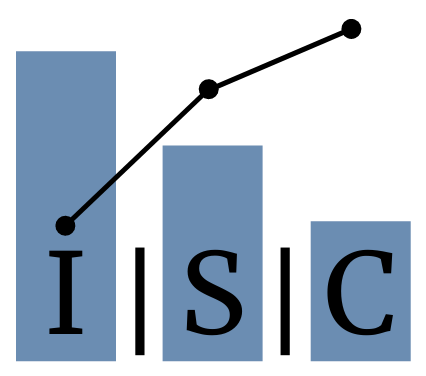all Resources
Definition of Improvement Science
Improvement science is an evolving field of study focused on the theories, methods, and practices that facilitate or hinder organizational efforts to continuously improve performance.
Improvement science:
Is an applied science, primarily concerned with solving practical problems.
Is interdisciplinary drawing on clinical science, systems theory, psychology, statistics, and other fields.
Contends that improvement comes from a combination of improvement skills and subject matter expertise.
Understanding how people experience our systems can provide deep insights into how the system needs to change and can inspire specific changes to make. Empathy interviews are one important way to access and learn from the user experience.
This ~10 minute video provides a broad overview of the foundations of improvement science, including:
Systems Thinking, Understanding Variation, and The Improvement Journey
Participants will understand the purpose and parts of Plan-Do-Study-Act (PDSA) cycles, review a PDSA cycle used in practice, and develop the Plan section for a cycle to be tried in a system.
Learn about the purpose of Plan-Do-Study-Act (PDSA) cycles and appreciate the deductive and inductive parts of PDSA cycles. Viewers will reflect on who is participating in the improvement journey as well as what methods might be used to source change ideas.
Learn about the Model for Improvement, including the use of the ‘three questions’ to organize improvement efforts. Viewers will appreciate the value of the Plan-Do-Study-Act cycle in generating learning about their systems.
Ordered Bar Charts and Pareto Diagrams help teams focus, providing knowledge on where to change, what issues are common and for who in the system change is needed.
The ability to distinguish real change from random variation in our data is critical to any improvement journey. Run Charts can help bring objectivity to these assessments.
Analyzing process is not always intuitive. Understanding what questions to apply to process maps can help.
Seeing the system creates important insights for teams focused on reducing errors, improving reliability and increasing quality. Process maps are useful tools to help teams get started.
A compiled list of foundational reading materials regarding the field of improvement science.
Solutions that deliver results at scale must be simple and sound. For those pursuing organizational improvement, questions remain: How do we codify our solutions?
How leaders interpret data affects the quality of decision making.
This video reviews the basic outline of what should be included in a project charter.
When embarking on any improvement project, there are three critical questions team must ask to guide improvement efforts…
Acute kidney injury (AKI) detected in primary care is associated with increased morbidity and mortality. AKI electronic alerts (e-alerts) and educational programmes have recently been implemented but their contribution to improve AKI care is unknown. This project aimed to improve response to AKI detected in primary care and used a factorial design to evaluate the impact of the UK National Health Service (NHS) AKI e-alert and AKI educational outreach sessions on time to response to primary care AKI stages 2 and 3 between April and August 2016.
This paper reports on a project to increase enrollment and attendance rates at seven early childhood education (ECE) centres in socio-economically deprived areas of Auckland, New Zealand, between January and June 2014. Participating centres used Breakthrough Series collaborative methodology with the Model for Improvement (Langley et al., 2009) to develop and test change ideas according to local context.
The National Orthopaedic Enhanced Recovery After Surgery (ERAS) Collaborative was launched in November 2013 to implement ERAS protocols for hip and knee total joint arthroplasty (TJA) and fractured neck of femur (NOF) in participating district health boards (DHBs) by December 2014. This paper reports on the results.
Colorectal cancer (CRC) screening helps achieve early diagnosis and better outcomes, yet many patients fail to receive recommended screening. As part of an academic improvement collaborative, 25 primary care practices worked to improve CRC screening and diagnosis. The collaborative effectively engaged teams in a broad set of process improvements with key lessons learned related to barriers, information technology challenges, outreach challenges/strategies, and importance of stakeholder and patient engagement.
Central line-associated bacteraemia (CLAB) is a preventable cause of patient morbidity and mortality in intensive care units. Target CLAB Zero was a national campaign that ran from October 2011 to March 2013 across all New Zealand ICUs (intensive care units). The campaign aimed to reduce the national CLAB rate to less than one incident per 1,000 line days and to establish a national measurement system for CLAB.
A driver diagram is an applicable tool for many contexts, from improving process reliability to redesigning a service to creating new products to generating enhanced user experience.
There seems to be a deep aversion to the idea of standardization in education. I sense it is because when educators think of standardization they think of examples such as “scripted curriculums” and “teacher proofing.” Their reaction may stem from two common beliefs: each student is unique, and each teacher is a craftsman…
Sustaining change in systems is hard. This session focuses on five elements of systems important to address when sustaining redesign efforts is needed.
Sometimes finding a solution to our problems requires innovative thinking. Structured creativity techniques can be powerful mechanisms for helping us identify new ideas for changing our systems.
Objective: To evaluate the effect of an intervention to improve the quality of data used to monitor the prevention of mother-to-child transmission (PMTCT) of the human immunodeficiency virus in South Africa.
This lecture on process improvement theory and application introduces the PDSA (plan—do—study—act) model and describes its application in healthcare settings.
Changes to South Africa’s prevention of mother-to-child transmission of HIV (PMTCT) guidelines have raised hope that the national goal of reducing perinatal HIV transmission rates to less than 5% can be attained. While programmatic efforts to reach this target are underway, obtaining complete and accurate data from clinical sites to track progress presents a major challenge. We assessed the completeness and accuracy of routine PMTCT data submitted to the district health information system (DHIS) in three districts of Kwazulu-Natal province, South Africa.
In the face of the massive burden created by human immunodeficiency virus/acquired immunodeficiency syndrome and other infectious diseases, developing nations must find ways to rapidly begin treatment for infected persons. Although infusions of personnel, supplies, and diagnostics would make a major contribution to expanding the capacity to treat these diseases, the lack of these resources creates a long-term challenge, and there is a need for additional approaches to spread effective interventions that can leverage existing resources and the much-needed infusions of new resources. This article describes one such approach—applied in several forms in South Africa—that aims to significantly increase the number of patients receiving antiretroviral therapy.




























